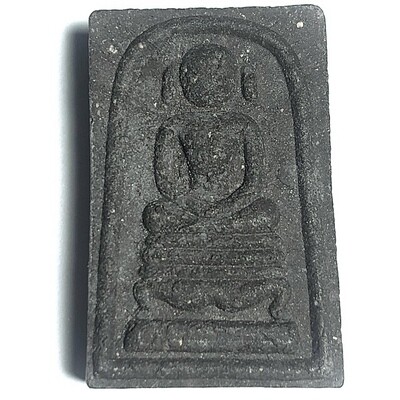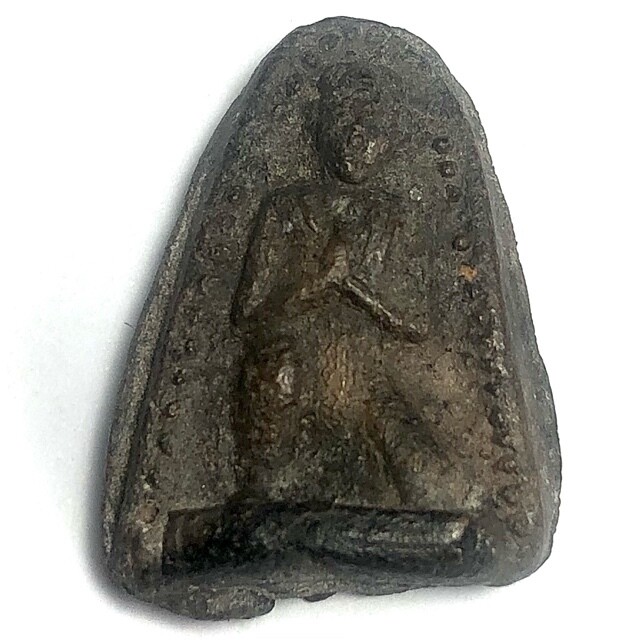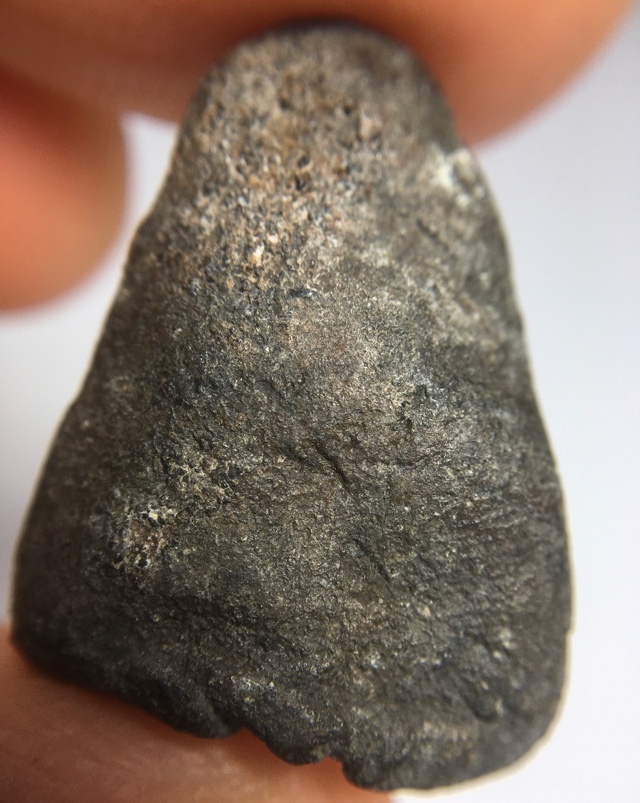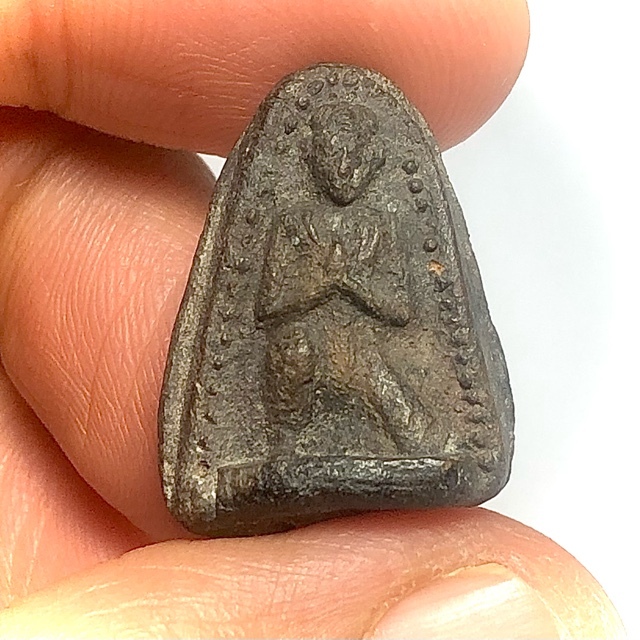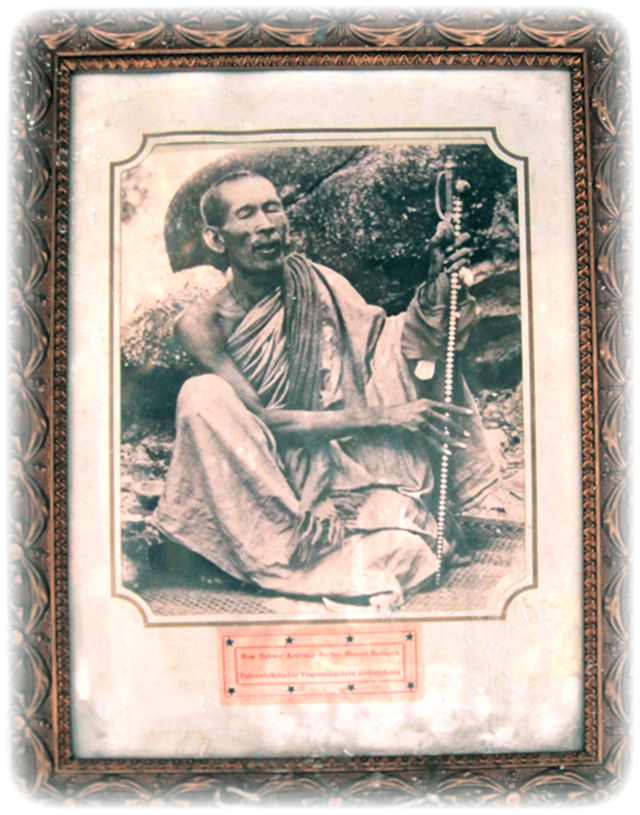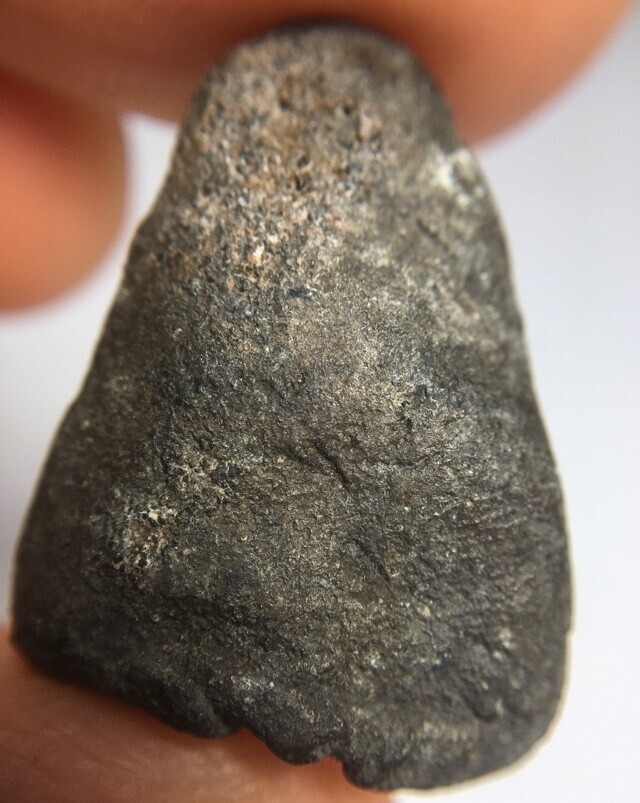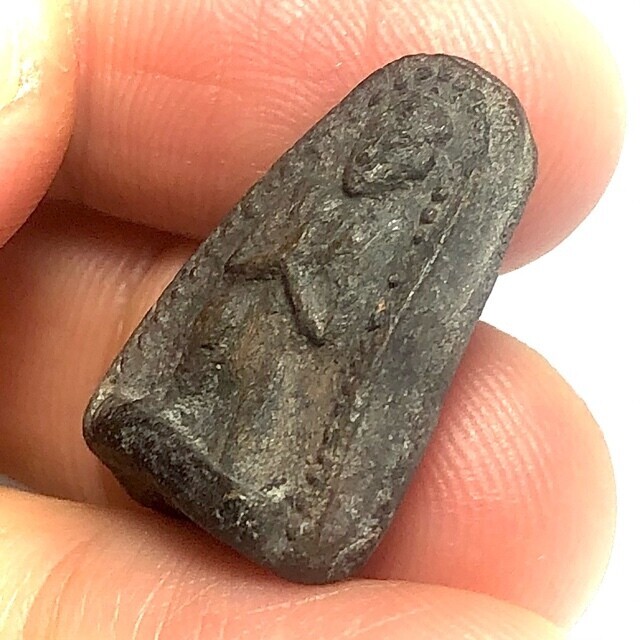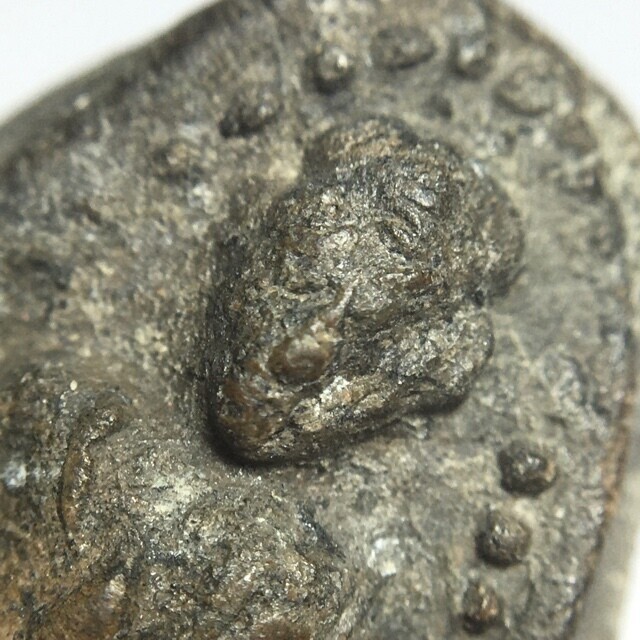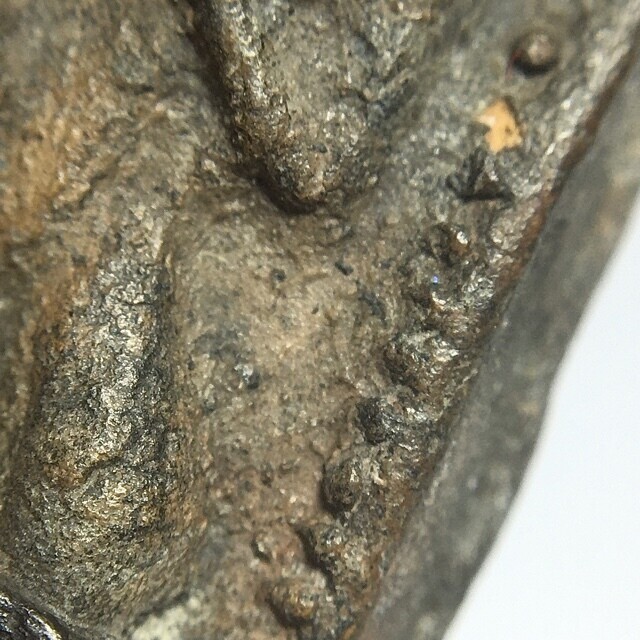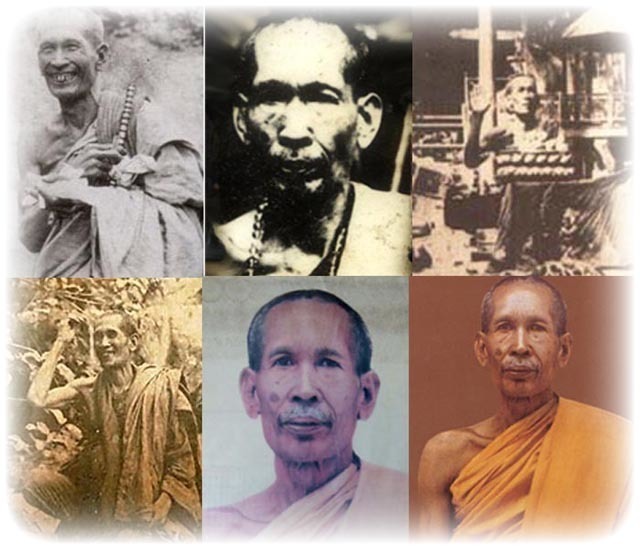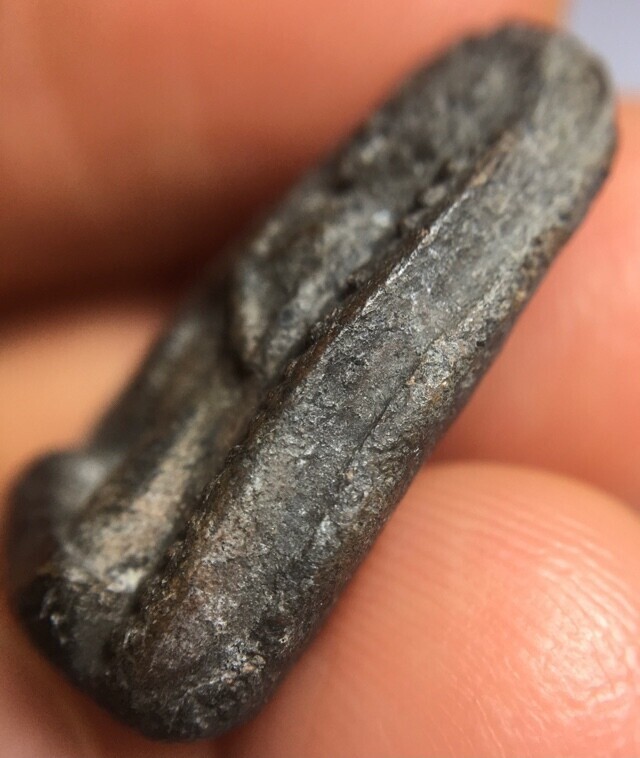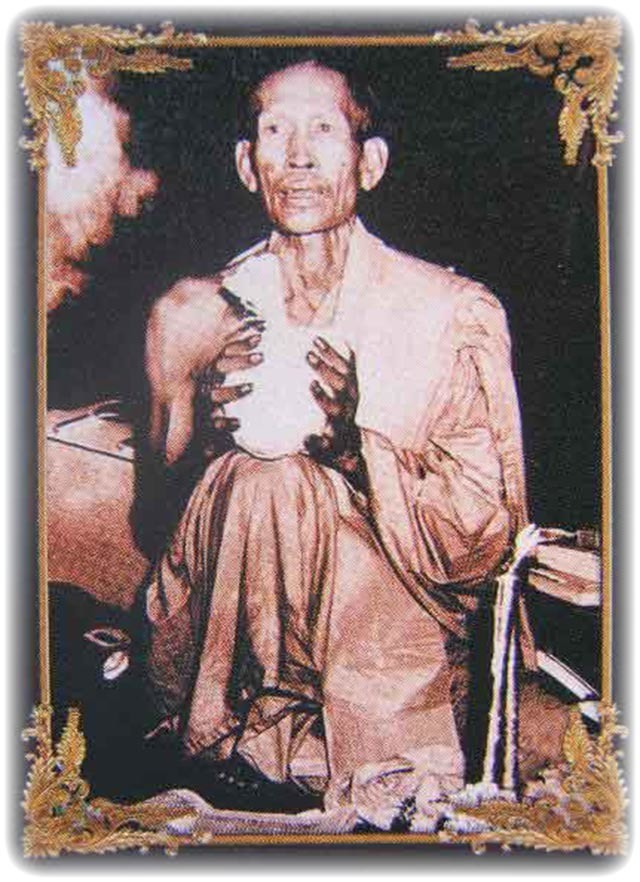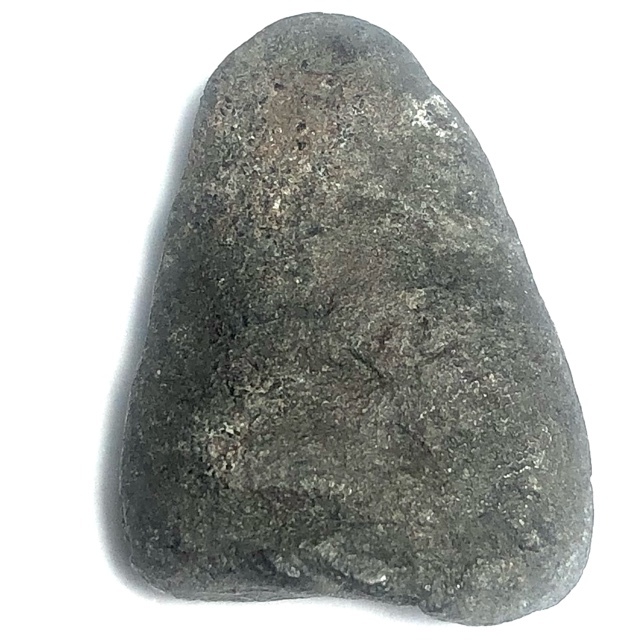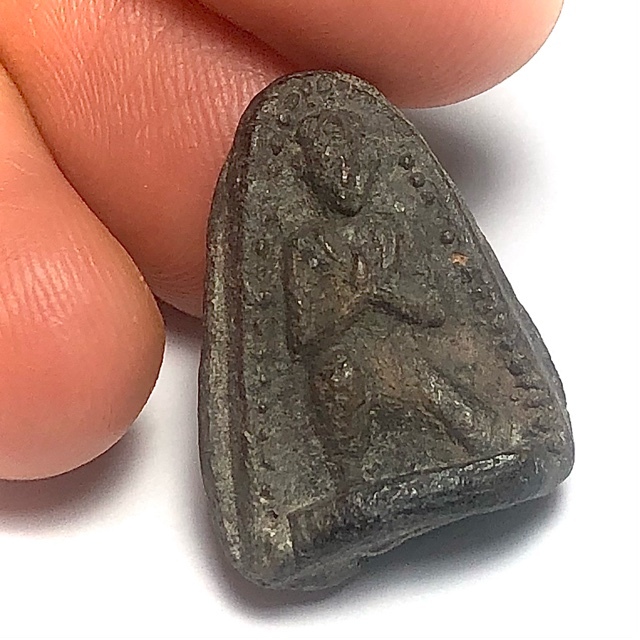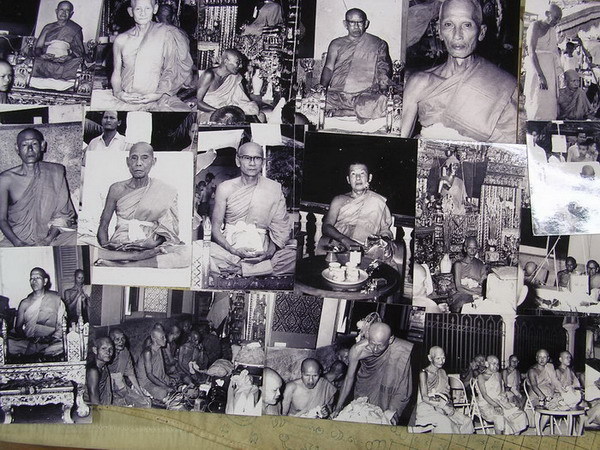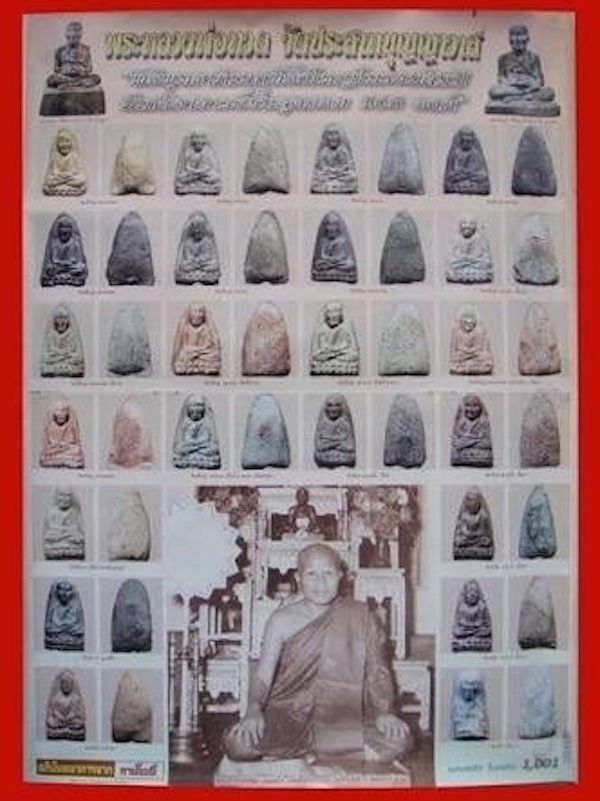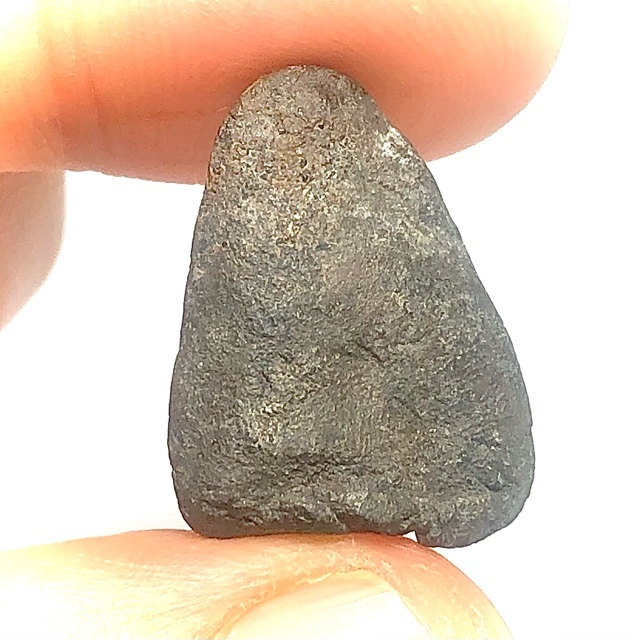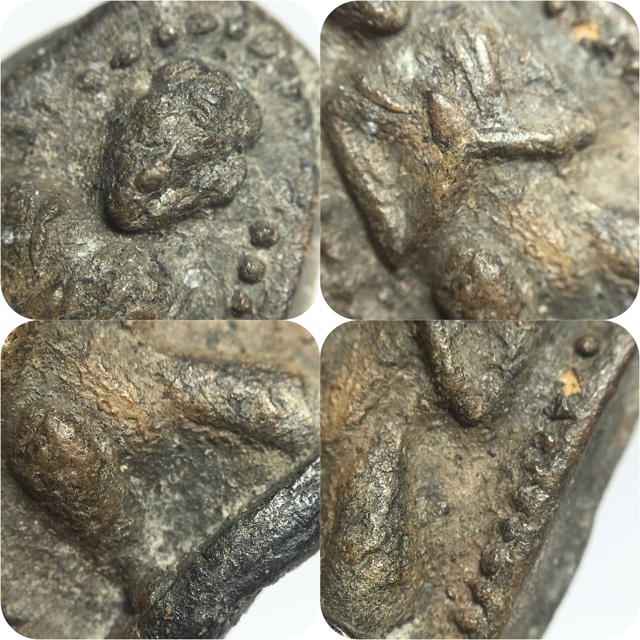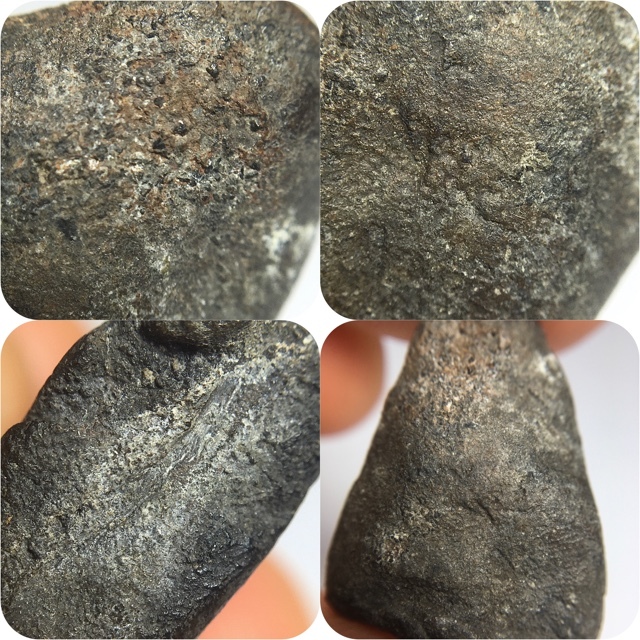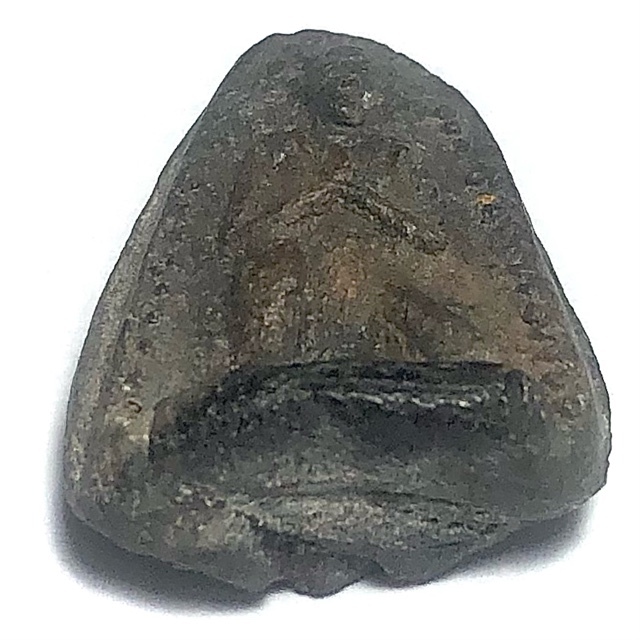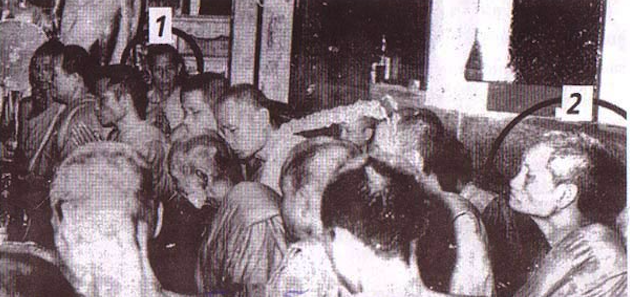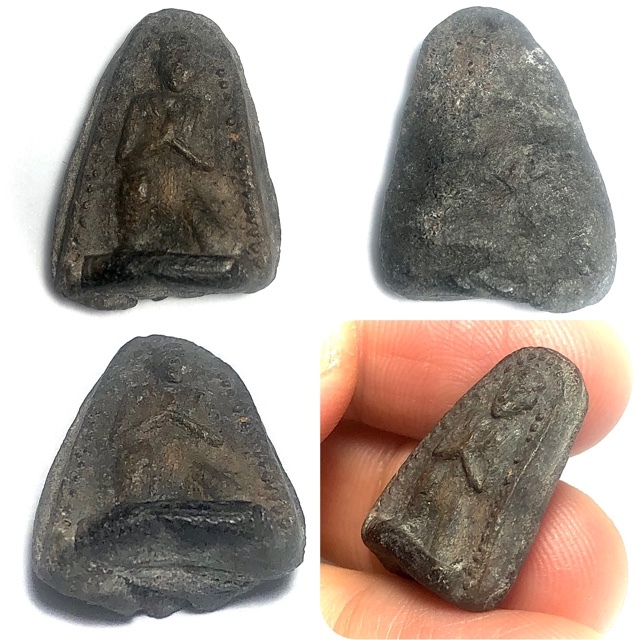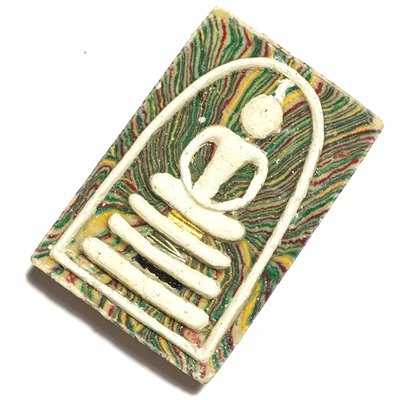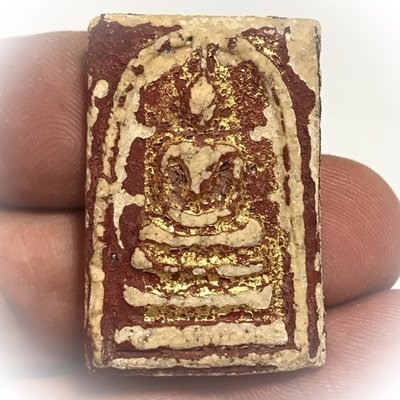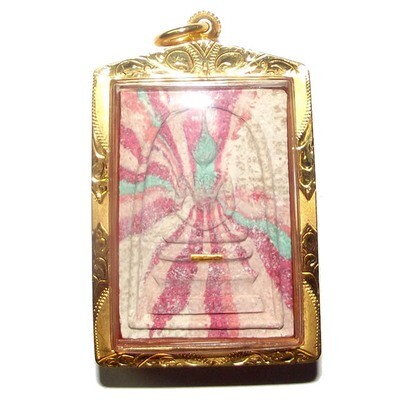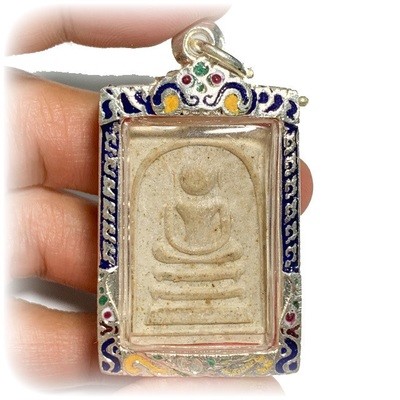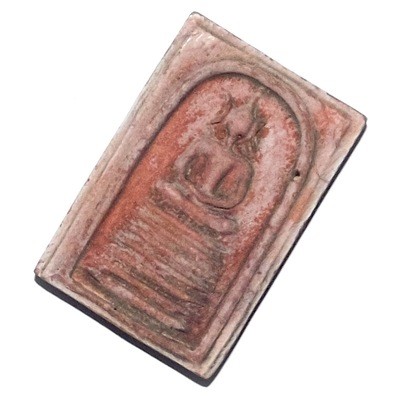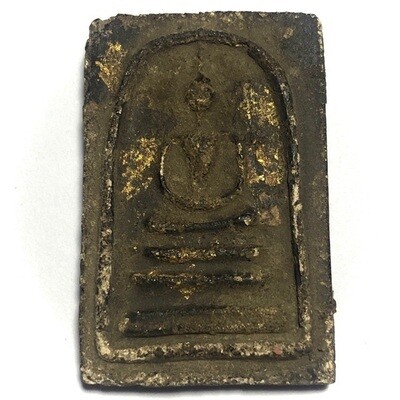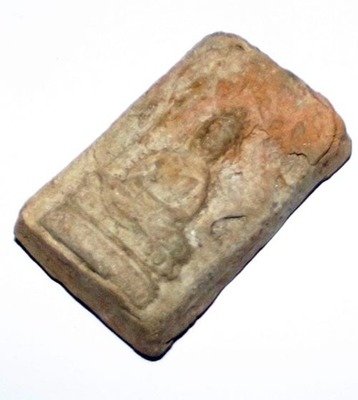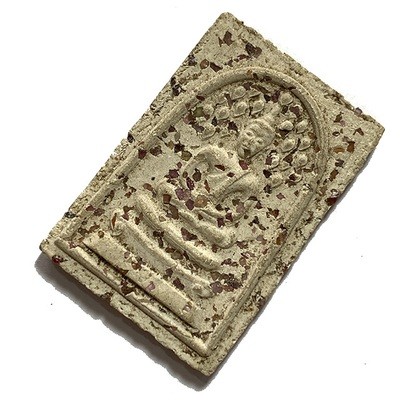Presenting a tiny but powerful and rare classic amulet from one of the Great Khao Or Masters of the 20th Century, Rian Glom Lek Hlang Chedi 2505 BE Nuea Tong Daeng Miniature Guru Monk Coin Por Tan Klai Wajasit
This Sacred amulet of the Great Khao Or Master of Nakorn Sri Tammarat, Master of Wat San Khan and Wat Pratat Noi, is a very rare amulet from Por Tan Klai’s 2505 BE Blessing Ceremony Edition, and is considered a ‘Jaek mae Krua’ type amulet (meaning ‘give to the kitchen maids and temple helpers’), which is suitable not only for men, but due to its miniature size, a perfect amulet for ladies or children to wear.

Rian Glom Lek 2505 BE Por Tan Klai Wajasit Wat Suan Khan
The 2505 BE edition of amulets of Por Tan Klai, is a highly preferred edition, which saw his famous ‘Rian Glom’ round Monk coin amulet with Chakra released, The Rian Glom Lek Hlang Chedi, and the Roop Tai Por Tan Klai Guru Monk Blesséd Photographamulets such as look om chan hmak and ya sen tobacco balls, and sacred powder amulets of various models.
A very rare and highly prized amulet for the devotees of Por Tan Klai to associate with his image and pray to him with a blessed image of the Guru, and the Chedi Relic Stupa on rear face for Buddhanussati and Marananussati. A powerful and Sacred amulet which has passed through the hands of the Guru and been blessed by him.
Por Tan Klai was one of the Top Guru Master Monks of the Last Century, and is considered one of the Four Great Masters of the Previous Generation of Lineage Masters of the Khao Or Southern Sorcery Lineage.
Kata Bucha Por Tan Klai
Pra Roop Muean LP Opasi Pim Lek 2506 BE Nuea Dam 2 Blessing Ceremonies 234 Guru Masters Wat Prasat
Pra Roop Muean LP Opasi Pim Lek Wat Prasat Bunyawas 2505-2506 BE - Nuea Pong Bailan Pasom Din Kakyayaks; Black Kakyayaks sacred peat marsh earths, and Bailan powders, with Pong Wised from many Great Masters. This amulet is a Pim Lek small-medium size version, measuring 2.3 x 1.8 Cm, and is suitable for those who prefer smaller amulets, as well as being extremely fitting for Girls and Children to wear.
The amulets were Blessed by 234 Great Guru Master Monks in Two Massive Blessing Ceremonies at Wat Prasat Bunyawas. This model is in 'Nuea Dam' Bailan and Kakyayaks Powders, and is an extremely rare model of the edition, and mostly carries a slightly higher price than the white powder versions.
 The 2555 BE (1961) Wat Prasat Bunyawas Edition Amulets, is a universally accepted and officially recognized edition of classic Buddhist Amulets, of extremely high esteem. This model is a Pra Niyom Preferred Model due to the many devotees of Luang Por Opasi, the Great Miracle Monk, who avidly seek and Bucha this particular amulet of his image, as well as collectors of the Wat Prasat Bunyawas edition also favoring this rare model, along with the Roop Muean LP Jong, and LP Sukh Guru Monk image models, which were also released in this edition.
The 2555 BE (1961) Wat Prasat Bunyawas Edition Amulets, is a universally accepted and officially recognized edition of classic Buddhist Amulets, of extremely high esteem. This model is a Pra Niyom Preferred Model due to the many devotees of Luang Por Opasi, the Great Miracle Monk, who avidly seek and Bucha this particular amulet of his image, as well as collectors of the Wat Prasat Bunyawas edition also favoring this rare model, along with the Roop Muean LP Jong, and LP Sukh Guru Monk image models, which were also released in this edition.
The blessing ceremony for these Amulets is also a historically famous blessing ceremony, for its immensity, and the presence of great powerful guru monks.
Luang Por Opasi was born in 2441 BE, in Nakorn Sri Tammarat, but was taken and placed in charge of the Sangkaracha at the Royal Temple of Wat Bowornives in Bangkok, where he remained studying and was finally ordained as a full Bhikkhu, in 2461 BE at the age of 20, at Wat Bovornives.
He continued on there to attain his completion of Dhamma Studies and develop all facets of his practice, and finally, after 20 years serving at Wat Bowornives, he decided to begin Tudong Solitary Forest Wandering. He spent the next 20 years wandering and learning Wicha with various Guru Masters throughout this time.
One of the masters he spent the most time with to absorb the methods of empowerment and formulas, was Luang Por Gop, of Wat Khao Sariga in Nakorn Nayok. He spent a long time with this Master in order to develop the special abilities of Dtecho Kasin (Fire Kasina), and to stare at the flames and meditate to vanquish the restless mind, and to overcome material attachment.
He was ordained by the Sangkaracha Monk himself Somdej Prayan Sangworn, as his Upachaya (Ordaining Officer). He studied Pali and Dhamma to reach the academic level of Prayoke 5, and then turned to study and practice Wicha Akom (Buddha Magic and Sorcery). Part of this practice, was to burn any possessions or material offerings given in the fire, and to watch them burn, until the Kilesa (selfish instinct and desires and attachments) cease to arise within the heart.
After mastering his own heart, he returned to Wat Bowornives. But after some time, with his practice of burning all thing he was given, except the four requisites of food, medicine, clothing and lodging necessities, began to cause devotees to begin to travel from far and wide to pay reverence to Luang Por Opasi at wat Bowornives, and this seemed unfitting to Luang Por Opasi, who did not wish to attract attention.
So he decided it was time to leave Wat Bowornives, and travel on Tudong to go stay at Bang Mot, but this was to no vaial, because the devotees just followed after him to Bang Mot, and slowly but surely he was receiving many devotees again. The local folk of Bang Mot had also become very faifhtful devotees of Luang Por Opasi, and had built a small Samnak Songk (name of a Buddhist Forest Ashram before it becomes officially a registered temple) for Luang Por to reside in permanently.
From then on, Luang Por remained at Asrom Bang Mot, and developed it into a fully fledged temple, with his fold of devotees ranging from the poorest farmer, to the richest noble, all of whom came to give alms, and watch those gifts which were not of the 4 requisites be burned in Luang Por Opasi's fire.
Everybody who came to have material possessions burned in the fire, would experience great wealthy fortunes thereafter, and the legend of Luang Por Opasi's Powers began to circulate. Luang Por Opasi was also very famous for his ability to appear in more than one place at the same time, and be seen by witnesses in both places. There is a Legend of a visit to India where Luang Por Opasi was supposed to appear, and he sent his two apprentice monks to travel ahead, saying he would appear there later. In 1955, LP Opasi and two of his disciples where invited to a Buddhist gathering in India to be held from October 28.
LP Opasi called to his two disciples to leave before him and that he would join them later. He also told them that he will not be on the spot before October 31 and to warn the organizers of his delay and the date of its arrival. October 31 many of his disciples went to the airport to wish LP Opasi a happy voyage, but it did not come, a few days later the death of LP Opasi was announced. In fact, in the evening, LP Opasi warned his monks that he was going to remain in meditation several days and to not disturb him under any circumstance, then he went in the Kuti.
He stayed there until a anxious monk decides to go and see whether LP Opasi were well or not, he enters the Kuti to find LP Opasi in a state having all the aspect of death. During this time, in India, the two disciples of LP Opasi attended the Buddhist gathering in company of LP Opasi. Lp Opasi spoke with many other Buddhists dignitaries and gave even a state education in front of several hundreds of people, even photos of this occasion has being taken.
LP Opasi said goodbye to its two disciples, and told them that he was going to return to Thailand only by separate means of transport. When they arrived the disciples had a hard time believing the news of LP Opasis death, everyone believed that they had become insane when they said to have spent the last days in his company. Only the testimony of several other monks present and the photographs in India of LP Opasi proved the veracity of their incredible history.
Each year the coffin of LP Opasi is opened, his body has not decomposed and his finger nails and hair is cut. This is a common thing regarding monks that have become enlightened, The body will not decompose or if the body is burned the bones will turn to stone or diamond.
Luang Por Opasi Kata for Chanting;
Ithi Sukhathoe Arahang Puttoe Namoe Puttaaya Bpatawee Kongkaa Phrapoom Taewaa Khamaamihang
The temple of Wat Prasat Bunyawas was built in 2376 BE, and was first given an official boundary and a name in 2379 BE, being first named 'Wat Klong Sam Sen', because it was located over the Sam Sen tributary canal. Its name was later changed to 'Wat Khwid', because of the 2 Sacred Giant Khwid Trees, which stood beside the Uposadha Shrine Room.

As far as the Luang Phu Tuad models of this edition, they were made to place 84,000 of them within the Chedi Stupa, at Wat Bunyawas (this is known as 'Kru' hiding place chamber, used to place amulets for safekeeping and folate to distribution to extend the period of the preservation of the existence of the Buddhist religion).
A Large number of extra Amulets were also made in addition to the 84,000 placed within the Chedi, to hand out to Devotees at the temple, during the blessing ceremony.
Below; 1. Luang Phu To Wat Pradoo Chimplee. 2 - Luang Por Noi Wat Dhamma Sala, along with other great masters at the Wat Prasat Bunyawas Blessing Ceremony
Four full days and nights of chanting were performed over these amulets by the 234 monks. The ceremony was so massive that it was considered to be the largest and most important sacred blessing ceremony of Amulets, since the great 25 centuries of Buddhism ritual, in the year 2500 Buddhist era.
